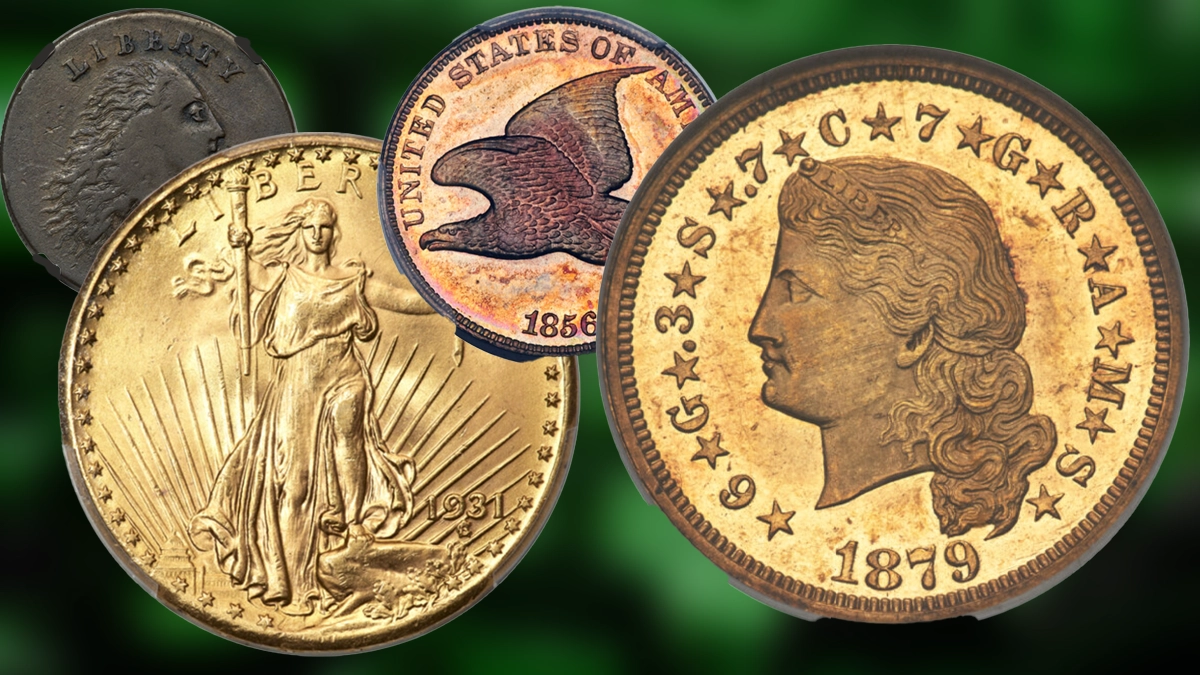An assemblage of uncommon cash from a number of elite collections and greater than 140 consignors is poised to make the Heritage November 20-24 US Coins Signature Auction one of many largest ever held by the agency.
Among the many prime collections within the occasion is the Greensboro Assortment, Half XI, a bunch of 71 tons from the trove that made its debut at Heritage on the 2012 ANA Nationwide Cash Present in Dallas; further installments have appeared at assorted Heritage occasions since then. The tons from the gathering on this occasion embody a spectacular set of Flying Eagle Cents, Indian Head Cents, and Buffalo Nickels, nearly all of that are in Proof format and with high quality — most stay housed in previous-generation holders ranging in grade from PR65 to PR69, with Cameos, Crimson Cameos, finest-knowns and CAC cash — by no means matched in any assortment provided at Heritage.
Among the many prime choices within the assortment is an 1856 Flying Eagle Cent, PR67+ PCGS CAC. This magnificent instance was one of many authentic cash distributed to congressmen and struck “on a daily manufacturing press at regular pace,” in keeping with specialist Rick Snow. When the United States Mint responded to financial components with drastic modifications to copper coinage within the 1850s, it started experimenting with new alloys and lowering the scale of the massive cent; its substitute by the small-diameter Flying Eagle Cent ushered in a brand new period in American numismatics. The Philadelphia Mint struck near 1,000 examples of Chief Engraver James B. Longacre’s Flying Eagle design sort for distribution to necessary people in 1856. CAC confirms the prime quality inside the grade of the provided instance, a exceptional first-year key date and the best instance seen by PCGS.
From the identical assortment comes a surprising 1927 Buffalo Nickel, SP65 PCGS CAC that’s considered one of solely six specimen strikes identified. The half dozen identified 1927 examples appeared about 35 years in the past. Three have been held by coin vendor Robert Rhue, who bought one in a non-public transaction and bought the opposite two at public sale. The provided instance is the one one graded in 65, with three finer; amongst CAC exmples, it’s considered one of two in 65, with none finer.
The Ronald Firman Rarities Assortment produced 13 tons for the November Heritage US Coin Public sale, together with a 1797 Reverse of 1797 Cent, MS66 Red and Brown that’s simply the best identified 1797 S-140 cent. It’s plated in Dr. Sheldon’s Penny Whimsy, in Invoice Noyes’ 1991 photograph e book and in his 2007 coloration photograph e book. Just one different Mint State S-140 is recorded in Del Bland’s Situation Census, and that one is three factors under this one. In line with Noyes in 2007, that is the one Mint State 1797 S-140, forward of three which are graded AU50.
Additionally from the Firman assortment is a 1793 S-3 Chain Cent, XF45 NGC CAC that seems to be a brand new entry that isn’t discovered within the Noyes/Lusk early copper database. It’s considered one of 16 1793 Chain Cents graded 45 with 24 carrying greater grades. Chain cents have been the primary American copper cash struck for circulation, and have been the primary cash produced on the Philadelphia Mint.
The Greensboro and Firman collections are simply two of the elite gatherings that can be on show within the public sale, which is also teeming with high-end trophies that aren’t part of a named assortment. One of many best is a powerful 1870-CC Liberty Double Eagle, AU Details NGC. The 1870-CC Liberty Double Eagle is a landmark rarity within the sequence, the rarest problem amongst Sort Two double eagles when it comes to absolute and situation rarity. It represents the primary 12 months of coinage on the Carson Metropolis Mint and is probably the most well-known and fascinating gold coin ever struck on the facility. The 1870-CC is unknown in Mint State and Carson Metropolis specialist Rusty Goe estimates the surviving inhabitants at solely 55 to 65 examples in all grades.
Additionally headed to a brand new house is an 1855 Double Eagle, Fully Struck MS63+ PCGS CAC that’s considered one of simply two graded in 63, with two finer; amongst CAC cash, there are two graded in 63 and only one with a finer grade. The 1855 is taken into account an obtainable date within the sequence, however it’s really scarce in AU situation and decidedly uncommon in Mint State, about 10 instances rarer than the 1855-S in MS60 or finer.
A 1799 Irregular Date Dollar, MS62 PCGS is an instance of the BB-152 selection that often is present in circulated grades, hardly ever exceeding the XF45 grade degree. This instance falls inside the Situation Census for the variability, considered one of simply 5 Mint State items and exceeded solely by single MS65, MS64, and MS63 examples.
An 1879 Flowing Hair Stella, PR63 Cameo NGC CAC is an iconic sample coin (Judd-1635) that enjoys in depth recognition amongst collectors due to its standing as each a sort coin and a coveted numismatic trophy. Technically categorized as a sample, the problem has been built-in into mainstream amassing, with demand persistently exceeding provide, particularly for high-quality examples just like the one provided on this Heritage public sale of US cash.
A 1931 Double Eagle, MS64+ PCGS is one other widespread treasure amongst critical collectors, considered one of simply 31 examples graded in 64 (there are 5 graded 64+), and with 43 carrying finer grades. The 1931 is without doubt one of the scarcer late-date Saint-Gaudens Double Eagles, with an estimated surviving inhabitants of roughly 110 cash over all grades. The 1930-S is scarcer, as is the 1932. The 1927-D and 1933 are, after all, additionally rarer dates, leaving the 1931 because the fifth-rarest double eagle Saint.
Details about all US cash on this Heritage public sale may be discovered at HA.com/1378.
* * *

